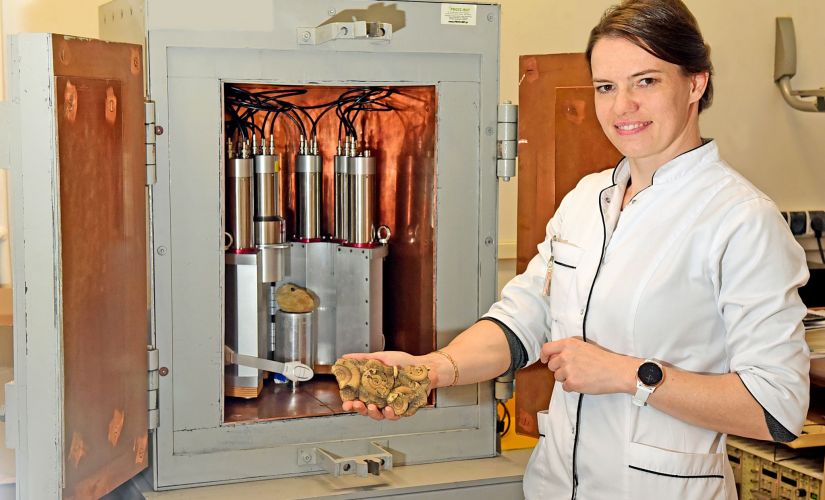It turns out that molluscs, such as ammonites, mussels and other organisms that lived millions of years ago, could accumulate uranium during fossilisation (the process by which dead organisms are transformed into a fossilised state) and thus become radioactive to a much higher degree than the surrounding sedimentary rock. Uranium as an element occurs in the geological structure of the Earth in three of its radioactive varieties, i.e. isotopes 238U, 2355U, and trace 234U. It is the isotopes of uranium 238 and 235 that are the natural, long-lived components of the Earth, beginning the so-called radioactive series.

Picture: Ammonite from the Jurassic period from France
Usually in sands, gravels and limestone rocks the content of the radioactive isotope 238U is at the level of a few, a few dozen Bq in a kilogram of mass and usually occurs at a similar level in relation to the isotope of thorium 238, which starts another natural radioactive series. In some fossils studied at the Institute of Applied Radiation Chemistry Lodz University of Technology the content of uranium isotope 238 reached even thousands of Bq per kilogram mass whereas the thorium isotope 238 remained at the level typical for a given type of sedimentary rock surrounding the fossil.
Fossils with elevated uranium content pose no radiological risk to collectors or museum visitors. It is also interesting to note that fossils with elevated 238U content show very good preservation of internal tissues, due to a concomitant process of phosphate accumulation (phosphatization). The research not only focused on assessing the radioactive isotope content of uranium, but also made it possible to see these preserved internal structures, such as the muscles of a bivalve or the siphon of an ammonite.
Research undertaken within the team often combines the advantages of modern and unique measurement technology with the history of the Earth and traces of organisms that are now extinct. This unusual combination of new research opportunities and the mysterious ancient world may result in fascinating new discoveries. And the first has already taken place...
Magdalena Długosz-Lisiecka
Institute of Applied Radiation Chemistry

